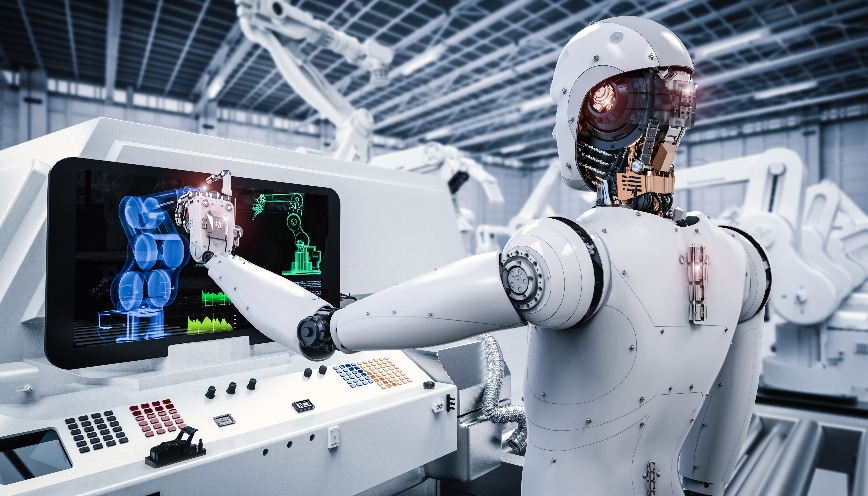Neura Robotics: Pioneering the Future
Neura Robotics has emerged as a significant player in the industrial robotics sector, distinguishing itself through innovative design and cutting-edge technology. Founded with a mission to enhance the human-robot collaboration, Neura Robotics has focused on developing humanoid robots that are capable of navigating complex environments and performing intricate tasks, which are traditionally achieved by human workers. This approach not only aims to boost productivity but also endeavors to increase safety within industrial settings.
The company’s salient feature is its bipedal humanoid robot, which is designed to mimic human movement. This characteristic enables the robot to interact seamlessly with existing production lines and to handle tools and machinery with a level of precision that was once thought to be unattainable for machines. Enhanced by artificial intelligence (AI), these robots can learn from their surroundings and improve their performance over time, showcasing a level of adaptability and intelligence crucial for modern industrial applications.
Moreover, Neura Robotics has forged a strategic partnership with Schaeffler, a global leader in automotive and industrial technology. This collaboration represents a vital step toward integrating advanced robotics solutions into the broader realm of manufacturing and logistics. By combining Schaeffler’s extensive expertise in industrial automation with Neura’s innovative robotic capabilities, they are positioning themselves to redefine the standards of operational efficiency and product quality in the industry.
Overall, the development of humanoid robots by Neura Robotics signifies a transformative shift in industrial production. As these machines become more sophisticated and capable, their role within various sectors is expected to expand, thereby influencing the future landscape of manufacturing and labor dynamics significantly.
Schaeffler’s Ambitious Deployment Plans
Schaeffler, a leading global manufacturing firm, has made a significant commitment to incorporate humanoid robots into its production processes, setting the stage for a transformative shift in industrial automation. The company has outlined an ambitious strategy to deploy several thousand Neura Robotics humanoids across its operations worldwide by the year 2035. This strategic initiative is aimed at enhancing overall productivity and operational efficiency, while also optimizing the workforce’s capabilities through advanced automation.
The decision to implement humanoid robots stems from a recognition of the pressing need for increased resilience and adaptability within production environments. As industries face mounting pressures from changing market demands and labor shortages, the integration of these robots offers valuable solutions. Humanoid robots are designed to collaborate seamlessly with human workers, performing repetitive tasks with precision and reliability. This collaboration can significantly free up human employees to focus on more complex and creative aspects of production, effectively elevating the overall quality of output.
Moreover, Schaeffler’s deployment plans signify a commitment to leverage cutting-edge technology for increasing efficiency in the supply chain. With the capabilities of humanoid robots, the company anticipates a reduction in operational costs and increased consistency in product quality. The robots will also enable production lines to operate around the clock, minimizing downtime and maximizing throughput. Such benefits position Schaeffler to remain competitive in an increasingly automated landscape while addressing both current and future manufacturing needs.
Ultimately, the integration of humanoid robots represents a forward-thinking approach that could redefine traditional production processes. As Schaeffler embarks on this journey, the implications for workplace dynamics and the industrial sector, as a whole, warrant close attention and exploration.
The Role of Humanoid Robots in Industrial Tasks
Humanoid robots are increasingly becoming integral components of industrial production environments. Their design, resembling that of humans, allows them to perform a variety of tasks traditionally handled by human workers. One of the primary advantages of these robots is their ability to lift heavy loads, which is particularly beneficial in environments where ergonomic concerns for human workers are paramount. By utilizing advanced materials and mechanisms, humanoid robots can handle significant weights consistently without the fatigue experienced by human employees.
In addition to lifting capabilities, humanoid robots excel in executing repetitive tasks, which are common in manufacturing processes. They can engage in activities such as assembly line work, packaging, and quality control with high accuracy and speed. This efficiency not only enhances productivity but also minimizes the margin for error, which is crucial in maintaining the integrity of the products being manufactured. Consequently, businesses can achieve higher output levels while reducing labor costs associated with human error.
The integration of artificial intelligence (AI) into humanoid robots further amplifies their roles in industrial tasks. AI enables these robots to learn and adapt to various work scenarios, offering greater flexibility and responsiveness to changes in production demands. For instance, if a production line undergoes a shift in the type of items being manufactured, AI-powered robots can quickly reprogram themselves to meet new criteria without extensive downtime. Furthermore, their ability to collaborate with human workers elevates the overall efficiency of production environments, allowing for a more harmonious interplay between human skills and robotic capabilities.
As industries continue to evolve, humanoid robots are set to play a pivotal role in transforming labor dynamics and operational methodologies. Their adeptness at enhancing productivity, combined with their supportive functions for human workers, marks a significant advancement in the industrial landscape.
Vision for the Future: Growth and Innovations in Humanoid Robotics
The burgeoning field of humanoid robotics is set to transform industrial production in remarkable ways. Companies like Neura Robotics are spearheading this revolution, aiming to deliver five million cognitive robots by the year 2030. This ambitious goal not only reflects the growing confidence in humanoid robots but also highlights the increasing recognition of their potential utility across various sectors. As businesses seek to enhance efficiency and productivity, the implementation of cognitive robots is anticipated to play a critical role in achieving these objectives.
Humanoid robots are being designed to work alongside human counterparts, complementing their skills while performing tasks that may be too dangerous or labor-intensive for human workers. This symbiotic relationship, where robots provide support and workers leverage their unique capabilities, is expected to pave the way for more adaptive and flexible industrial environments. With the rapid advances in artificial intelligence, machine learning, and robotics technology, the capabilities of these machines are constantly evolving. Continuous innovation is vital to maintaining competitive advantages and adapting to changing market demands.
Furthermore, the expansion of humanoid robotics is likely to spur a new wave of workforce development. As traditional job roles evolve, there will be a growing need for skilled workers capable of operating and collaborating with these advanced machines. Educational institutions and training programs will need to adapt, focusing on skills that bridge the gap between human labor and robotic automation. This transformation signifies not only a change in production methods but also an opportunity for individuals to engage in new and emerging roles within the industry.
In conclusion, the future growth and innovation in humanoid robotics hold the promise of redefining industrial production globally. As companies invest in this technology, the landscape of the labor market and operational efficiencies will undergo significant changes, ultimately leading to a more integrated and productive industry.




